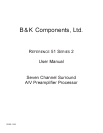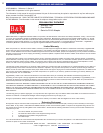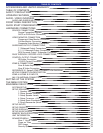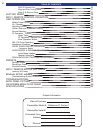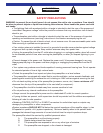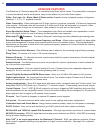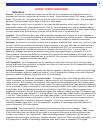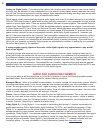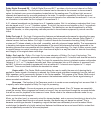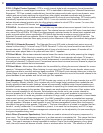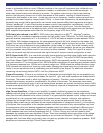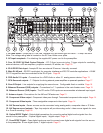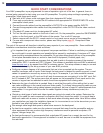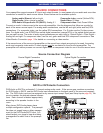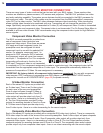
Analog vs. Digital Audio - This refers to the method used to place audio information on the source material
and how they are delivered to your preamplifier from the source. Analog signals exactly represent the sound
you will hear through a continuously varying voltage. Audio cassettes are analog recordings and are normally
delivered to your preamplifier over a pair of coaxial audio cables.
Digital signals closely approximate the original audio signals with a set of numbers referred to as a bitstream.
CDs and DVDs are sources of digital audio and are normally connected to your preamplifier through a single
coaxial or optical digital cable. There are several different bitstream formats available. The simplest format is
called Pulse Code Modulation (PCM). In PCM, the bitstream directly represents the original 2-channel audio.
In Dolby Digital and DTS (see "Audio and Surround Formats" below) bitstreams are modified using a process
called compression to squeeze more information into limited space. DTS squeezes 5.1 channels into the
space normally required for two uncompressed channels, while Dolby Digital squeezes 5.1 channels into
about ¼ the space required for two channels. Your preamplifier automatically detects the bitstream currently
being provided from the source and performs the required decompression and surround processing. If no
digital signal is present your preamplifier will automatically switch to analog processing. All sounds that you
hear from your speakers are analog. Digital signals are automatically converted to analog by your preampli-
fier before being output to the speakers.
If analog signals exactly represent the audio, while digital signals only approximate it, why would I
want to use digital?
All analog sources add some amount of noise and distortion to the audio signal. Additional noise can be
picked up through the cables from the source to your preamplifier. It is impossible for the preamplifier to tell
the difference between the desired signal and the added noise and distortion, so it reproduces both of them.
The result is increased background noise and decreased dynamic range and fidelity. Digital signals are virtu-
ally immune to noise and distortion. The preamplifier can, therefore, reproduce the signal with the greatest
possible fidelity. We recommend you use digital signals whenever possible. Also Dolby Digital and DTS (see
"Audio and Surround Formats" below) work only with digital signals.
AUDIO AND SURROUND FORMATS
Your source material will be played back on your B &K processor in one of the following possible formats
described below. Each format can be used for various listening conditions.
Monaural (Mono) - Mono is the oldest format available. It contains a single, full range audio channel. Modern
recordings are seldom made in this format, however older movies and music may only be available in this
format. You may get mono from any source - digital or analog. Your preamplifier can produce mono in one to
seven channels depending on speaker and audio setup. Since all modern sources are stereo, the mono infor-
mation is usually replicated on both the left and right channels.
Stereo - Stereo contains two discrete, full-range front left and right audio channels. This is the most common
format for music and is also used on many movies. You may get stereo from any source - digital or analog.
Sound will normally come from the seven speaker channels, but your preamplifier can produce stereo in two
to seven channels, depending on speaker and audio setup.
Dolby Digital 5.1 - Dolby Digital 5.1 is a method of transmitting and storing 5.1-channel soundtracks via
digital media such as DVDs, digital cable, digital broadcast TV (DTV), and satellite transmissions. Dolby
Digital 5.1 is transmitted over the optical digital or coax digital connections. Unlike the Dolby Surround
encode/decode Pro Logic process, which sacrifices channel separation to get surround onto any stereo
soundtrack, Dolby Digital 5.1 is a discrete system that keeps the multiple channels fully separated throughout
the encoding and decoding processes. In addition to having full-range front left, center, right, left surround,
and right surround channels, Dolby Digital 5.1 soundtracks carry a sixth (“.1”) channel recorded with low-
frequency effects. For more information on Dolby Laboratories, please visit www
.dolby.com.
6



